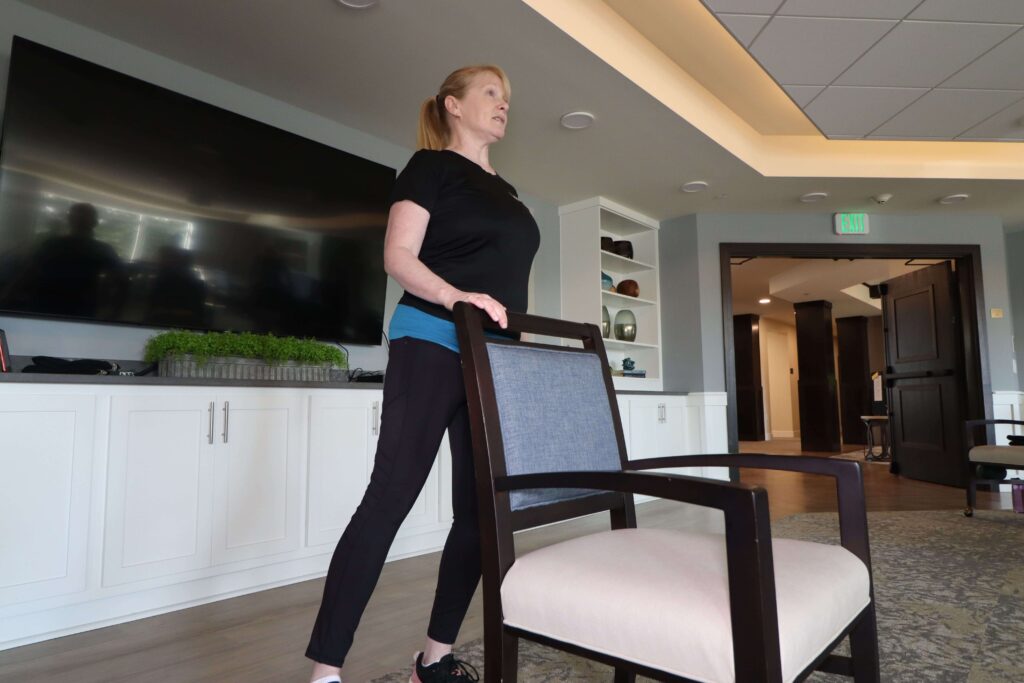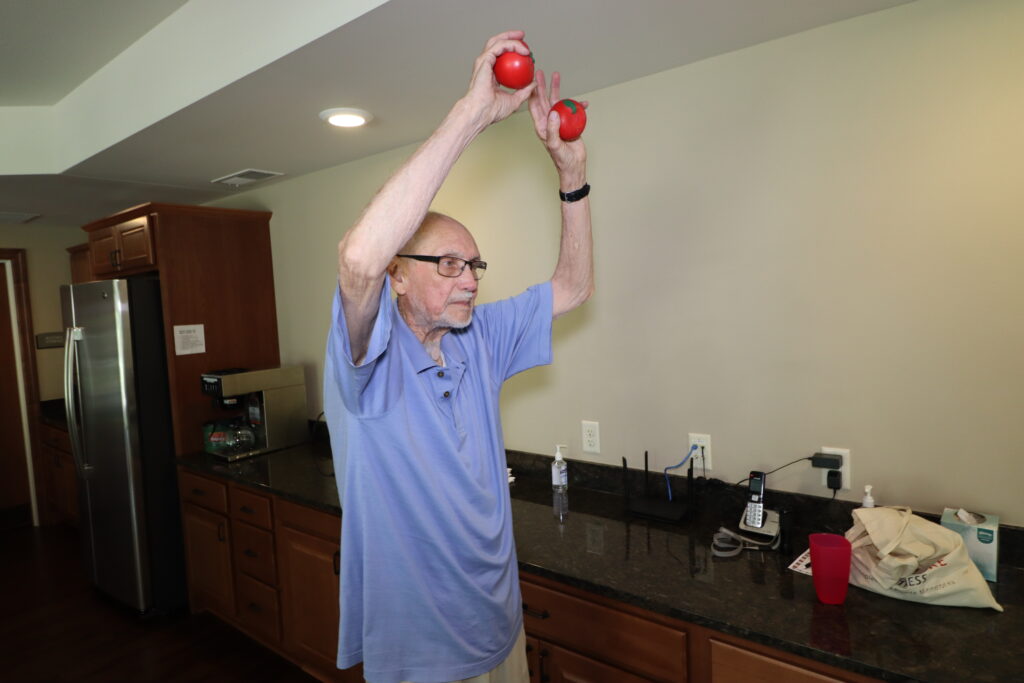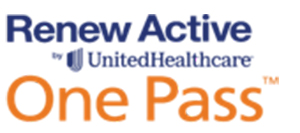Mental well-being is just as crucial as physical health, and one of the best natural ways to enhance it is through regular exercise. The U.S. Department of Health and Human Services exercise guidelines recommend specific durations of moderate and vigorous aerobic activity for healthy adults. While mental health professionals often recommend therapy and medication for treating mental health conditions such as major depression, anxiety, and mood disorders, physical activities offer an accessible and effective complementary approach.
Have you ever noticed how, with just a bit of a brisk walk outside or an energetic Yoga session, your mood suddenly turns more…upbeat? Nothing has truly changed, but even so, you feel like everything’s going to be ok or your mind is clearer.
You’re not imagining it, and that’s one of the most under appreciated effects of exercise.
Research has shown that even moderate-intensity exercise can lead to an acute exercise-induced increase in mood-enhancing chemicals, improving both mental and physical health. The beneficial effects of exercise on mood states extend to a wide range of people, from young adults to middle-aged adults and seniors.
Give us a few minutes of your time and learn how even sporadic bouts of exercise can have deep and positive behavioral effects.
The Wide Range of Benefits of Exercise
Engaging in regular exercise provides numerous health benefits beyond just boosting mood, of course. Additionally, it offers various physical benefits, such as improved prevention of health issues like high blood pressure and diabetes.
- Improved Cardiovascular Health: Aerobic exercise, such as running, swimming, and cycling, strengthens the heart, improves cardiovascular fitness, and enhances blood circulation. The American Heart Association recommends at least 150 minutes of exercise per week to maintain cardiovascular health.
- Enhanced Immune Function and Energy Levels: Studies indicate that moderate-intensity activity strengthens the immune system and increases energy levels, reducing feelings of fatigue. Acute exercise-induced changes in immune response contribute to long-term resilience against illnesses.
- Increased Muscle Strength, Flexibility, and Mobility: Strength training and resistance exercises improve muscle tone, joint health, and overall mobility, preventing injuries and age-related decline in physical fitness.
- Better Cognitive Function: Physical activity has been linked to enhanced executive function, cognitive task performance, and memory. Exercise influences neurotrophic factors such as brain-derived neurotrophic factor (BDNF), promoting adult neurogenesis and long-term memory formation.
- Mood Stabilization: Regular physical activity helps regulate emotional fluctuations, reducing the negative mood associated with mood disorders, depressive disorder, and clinical anxiety.

How Exercise Boosts Mood: The Science Behind It
As mentioned, most people recognize the benefits of exercise for physical fitness, but fewer fully appreciate its impact on cognitive performance and emotional stability. Incorporating moderate physical activity into daily routines, starting with short durations and gradually increasing the time, can lead to greater energy and health benefits over time. Understanding the influence of exercise on neurochemical levels will help appreciate how even acute exercise-induced improvements can lead to a happier mindset:
The “Feel-Good” Effect of Endorphins
One of the most well-known effects of exercise is the release of endorphins, chemicals in the brain that act as natural painkillers and mood elevators. Activities like long-distance running, high-intensity aerobic exercise, and cardiovascular exercise stimulate this process, leading to the well-documented “runner’s high.”
Serotonin and Dopamine Production
Exercise increases serotonin and dopamine production—two neurotransmitters associated with happiness and mental stability. The influence of exercise on these neurochemical levels plays a key role in alleviating symptoms of depression and anxiety, making physical activity a valuable tool in managing mental health disorders. It is important to connect with local mental health services and organizations that can offer further assistance and information regarding mental illness.
Stress Reduction Through Cortisol Regulation
Cortisol is the body’s primary stress hormone, and prolonged exposure to high levels of cortisol can lead to chronic stress and anxiety. Regular exercise helps regulate the stress response, reducing cortisol levels and their negative effects, leading to emotional stability and more resilience against anxiety and depression symptoms.
The Resulting Behavioral Effects and Mental Health Benefits of Exercise
Even small bouts of exercise can significantly enhance mental health and emotional well-being, but consistent, long-term exercise can yield the following beneficial effects:
- Reduced Symptoms of Anxiety and Depression: Research supports the effectiveness of moderate exercise in reducing symptoms of major depression, clinical depression, and anxiety. Acute exercise studies have demonstrated that even low-intensity exercise can positively influence depressive symptoms and stress responses.
- Improved Self-Esteem and Confidence: Achieving fitness goals fosters a sense of accomplishment. Whether improving cardiovascular fitness, increasing strength, or mastering a new exercise routine, physical progress builds confidence and enhances self-esteem.
- Better Sleep and Mental Clarity: Exercise positively affects sleep patterns, leading to improved mental clarity and cognitive function. High-intensity exercise can promote deeper sleep, while moderate-intensity exercise reduces insomnia symptoms.
- Building Resilience Through Routine and Discipline: Establishing a daily routine that includes physical activity helps create structure and long-term behavioral changes, enhancing overall mental well-being.
- Enhanced Cognitive Function and Brain Health: Exercise supports hippocampal function, which is essential for learning and memory. Research indicates that cardiovascular exercise promotes neuroplasticity and protects against cognitive decline in healthy adults.
- Healthy Habit Formation: Incorporating regular exercise into daily life strengthens discipline, increases resilience, and improves overall fitness levels.
Exercise as a Complement or Alternative to Therapy
For individuals undergoing cognitive behavioral therapy (CBT), incorporating an exercise program into their daily routine can enhance treatment outcomes. Research in sports medicine and mental health professionals consistently highlights the psychological benefits of exercise in reducing the severity of various mental health disorders.

The Best Types of Exercise to Boost Mood
Different types of exercise provide a vast array of mental health benefits that can significantly enhance your overall well-being. Below are some of the most effective types of exercise to consider incorporating into your routine:
Cardiovascular Workouts (Running, Cycling, Swimming)
Engaging in aerobic fitness activities such as running, cycling, or swimming effectively elevates your heart rate and promotes better circulation throughout the body. This process stimulates increased blood flow to the brain, which supports cognitive performance while also helping to alleviate symptoms commonly associated with severe or moderate depression and anxiety.
Strength Training for Mental Toughness
Participating in strength training exercises not only improves physical health but also plays a crucial role in building self-discipline and resilience. This form of exercise has been shown to reduce clinical anxiety and enhance both physical strength and mental endurance. Moreover, acute resistance exercises or high-intensity exercises contribute positively to psychological well-being.
Yoga and Mindfulness Practices
Yoga is a holistic practice that combines physical movement, controlled breathing techniques, and mindfulness elements. This combination significantly reduces mental stress and promotes relaxation. Additionally, research has validated that yoga influences neurochemical levels positively and promotes emotional balance.
Outdoor Activities and Exposure to Nature
Expert opinion is also unanimous on how exercising outdoors provides a unique set of benefits beyond just physical activity. It allows you to increase your vitamin D levels through sunlight exposure, reduces stress levels, and fosters a heightened sense of well-being. Engaging in moderate or low-intensity exercises such as hiking, walking, or cycling in natural environments greatly enhances the mental benefits associated with regular exercise.
How Much Exercise is Enough?
How to Incorporate Exercise into Your Daily Exercise Routine
Adapting new habits is never easy, and less so when it’s introducing voluntary exercise into your routine. It takes good habits like discipline, time management, and willpower to change your brain chemistry through an exercise-induced increase in mood-boosting chemicals. The process can be frustrating because that’s precisely why you want to incorporate aerobic activity or strength training into your life in the first place: to see positive behavioral effects.
However, there are a lot of tips or “life hacks” you can start with that will make your long-term exercise goals more realistic and easier to adapt into your daily routine.
- Start Small and Stay Consistent: Engaging in just a few minutes of exercise daily can lead to exercise-induced improvements in mood and energy levels. Gradually increasing activity levels ensures long-term adherence.
- Find Activities You Enjoy: Selecting enjoyable physical activities enhances motivation and prevents exercise-induced fatigue. Whether it’s dance, sports, or structured workout programs, consistency is key.
- Make It a Social Activity: Social interaction through group fitness classes, workout partners, or sports teams boosts accountability and motivation.
- Track Your Progress and Set Goals: Setting achievable fitness goals encourages consistency and highlights improvements in both mental and physical health.
Safety Considerations & Consulting a Professional
- Seek Professional Advice: Consulting a health professional or fitness expert can help tailor an exercise program to your specific needs.
- Listen to Your Body: Avoid overexertion and be mindful of physical symptoms such as pain or fatigue.
Tips for Beginners
Making Exercise a Sustainable Part of Your Lifestyle
Incorporating exercise into your daily routine can be challenging, but there are several strategies that can help make it more sustainable. Here are some tips:
- Find Activities You Enjoy: Engage in physical activities that you enjoy, such as walking, cycling, or swimming. This will make it more likely that you’ll stick to your exercise routine.
- Schedule It In: Treat exercise as a non-negotiable part of your daily routine, just like brushing your teeth or taking a shower. Set aside specific times for exercise and stick to them.
- Vary Your Routine: Mix up your exercise routine to avoid boredom and prevent plateaus. Try new activities or take a different route on your daily walk. Variety keeps things interesting and challenges your body in new ways.
- Make It Convenient: Find ways to incorporate exercise into your daily routine, such as taking the stairs instead of the elevator or walking to work. Convenience reduces barriers to exercise and makes it easier to stay consistent.
- Get Support: Exercise with a friend or family member, or join a fitness class to stay motivated and accountable. Social support can enhance your commitment and make exercise more enjoyable.
By implementing these strategies, you can make exercise a regular and enjoyable part of your lifestyle, leading to long-term health benefits.
Tracking Progress and Staying Motivated
Don’t Worry, Be Happy, and Boost Your Mood with Exercise
The benefits of exercise extend far beyond physical fitness—regular physical activity improves mood, enhances cognitive functions, and reduces symptoms of mental health disorders. Regardless of fitness level, engaging in exercise sessions tailored to your preferences can lead to long-term positive effects.
For seniors or those looking for structured exercise programs, Live 2 B Healthy offers professionally guided fitness solutions to help maintain an active and healthy lifestyle. Start your journey toward better mental and physical health today!

















